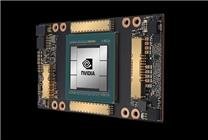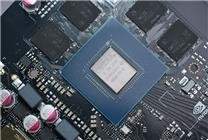### Summary
– The importance of HBM (High Bandwidth Memory) is rapidly increasing, becoming essential in the AI era and rivaling the value of high-performance GPUs.
– Major players like SK Hynix, Samsung, and Micron dominate HBM production, but Chinese firms are swiftly advancing in this technology.
– Changjiang Storage and Changxin Storage are collaborating to develop HBM3 memory, aiming to break the current market monopoly.
—
### The Rise of High Bandwidth Memory in the AI Era
As the AI landscape evolves, the significance of High Bandwidth Memory (HBM) is becoming increasingly pronounced. This vital technology is emerging as a cornerstone not only for artificial intelligence applications but also stands as a direct competitor to high-performance GPUs. With its advanced capabilities, HBM is being heralded as a pivotal player in modern memory technology, drawing attention and investment from major manufacturers.
#### Dominance in HBM Production
Currently, the production of HBM is primarily controlled by a few powerhouse companies: SK Hynix, Samsung, and Micron. These giants are at the forefront of this technology’s evolution, leading the way in both innovation and mass production. However, the landscape is changing. Domestic memory chip manufacturers are making significant strides forward by expanding their production capacities. Concurrently, they are implementing rapid upgrades from DDR4 to DDR5 technology, ensuring they remain competitive in an increasingly sophisticated market.
In a significant development, leading Chinese companies Changjiang Storage and Changxin Storage are joining forces to embark on developing HBM3memory. Both firms are regarded as titans in the flash memory and memory chip sectors within China, signaling a robust move to stake their claim in the lucrative HBM market.
#### Advancements in Memory Technology
Changxin Storage has previously made significant progress with HBM2 memory but recognizes that evolving to HBM3 involves more sophisticated requirements regarding chip stacking technology. Fortunately, Changjiang Storage has honed a portfolio of valuable experience in the R&D of flash memory. Their innovative Xtacking technology enables precise mixing and bonding of chip circuits, facilitating enhanced performance.
This Xtacking technology has been in development for the past five years and has shown impressive applications in the production of 3D flash memory. Notably, Changjiang Storage has achieved mass production of 270-layer stacked 3D flash memory, positioning itself as a significant player globally with a substantial portfolio of hybrid bonding patents. Between 2017 and 2024, the company has disclosed over 119 patents—exceeding even Samsung’s 85—and continues to innovate.
#### Future of HBM in China
While both Changjiang Storage and Changxin Storage have yet to officially comment on their collaborative venture, the potential of HBM3 memory becoming a reality is promising. Whether through combined efforts or independent initiatives, there are strong indications that domestic HBM3e memory formats could achieve certification within the year, paving the way for production to commence in the next two years.
This development signals a pivotal shift in the HBM landscape, suggesting that the current market dominance held by American and Korean firms could be challenged. The emergence of competitive domestic players could invigorate the market, fostering innovation and reducing reliance on established foreign technology.
As these Chinese manufacturers continue to advance their capabilities and collaboration, the implications for the global memory market are substantial. A successfully developed and produced domestic HBM3 memory would not only enhance local technological independence but also position China as a formidable competitor on the world stage.
#### Conclusion
In summary, as the AI sector continues to proliferate, so too does the necessity for HBM. With major technological advancements and strategic collaborations in place, China’s firms are poised to redefine the competitive landscape of high-bandwidth memory. The efforts of Changjiang and Changxin Storage mark a critical juncture in the evolution of memory technology and set the stage for a new era of innovation in the semiconductor industry.








